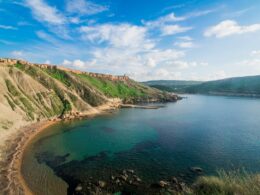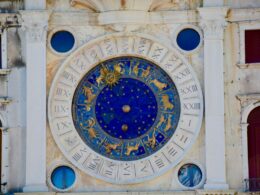Did you know that light pollution from cargo ships can impact nesting birds? A study published in the Journal of Ornithology recently found that light activity disrupts the activity of breeding Yelkouan Shearwaters and may affect their breeding success. The authors of the study concluded that regulating light emission and shipping activity during the breeding season is required to mitigate the impacts on nocturnal seabirds, conclude the authors.
Yelkouan Shearwaters (Garnija in Maltese) are seabirds which nest in deep burrows and caves in limestone cliffs in the Maltese Islands and across the Mediterranean region, and they approach these cliffs only under the cover of darkness to avoid being killed by predators.
While these seabirds are adapted to the moon cycle, natural behaviours can be disrupted by light pollution. Yelkouan Shearwaters are considered vulnerable to extinction and breeding colonies have previously been abandoned due to human activity that involved light pollution.
Martin Austad and colleagues from BirdLife Malta, the Royal Society for the Protection of Birds (RSPB) and the University of Giessen (Germany) examined how light pollution from large ships refuelling at sea affected a colony of Yelkouan Shearwaters nesting at Majjistral Nature & History Park, Malta.
Because the shearwaters are nocturnal and cannot be counted visually when they return to their nest sites, the authors captured and tagged adult shearwaters with small electronic chips (similar to those used in pets), and then used a radio monitoring system to measure the number of birds passing in and out of the cave during the spring breeding seasons 2017 to 2020.
The authors also measured light pollution from nearby ships by measuring ambient light shining on the cliff face where shearwaters breed and tracked ship activity during that time.
The research clearly showed that the presence of ships increased the brightness of the colony, with an effect similar to a full moon. As expected,
the number of birds entering the colony was lower when the night was brighter. In the presence of ships and the resultant light pollution, the number of shearwaters entering the cave per hour decreased on average by 18%.
The authors suggest that because shearwaters avoid entering the colony in higher levels of light, they may not be able to feed chicks as regularly as needed if ship traffic artificially illuminates a colony.
They advocate against nocturnal ship activity in front of shearwater breeding colonies and encourage the shipping industry to work to reduce its environmental impact on seabirds. Each ship can reduce light pollution by installing blinds and shielding accommodation and working lights respectively, and similar measures have been adopted successfully in the southern oceans and could be implemented in Europe and Malta.
The refuelling of ships is taking place within protected marine Natura 2000 sites, and Maltese Authorities should decrease light pollution within these protected sites while setting the example on vessels’ light regulations across the Mediterranean.
The study was carried out under LIFE Arċipelagu Garnija, financed by the EU’s LIFE programme and co-financed by Malta’s Ministry for the Environment, Planning and Climate Change. BirdLife Malta, RSPB and Transport Malta were partners in the project.
For other Sunday Circle features read this interview with artist Francesca Balzan or this feature about Fjura, a mixed media exhibit.










